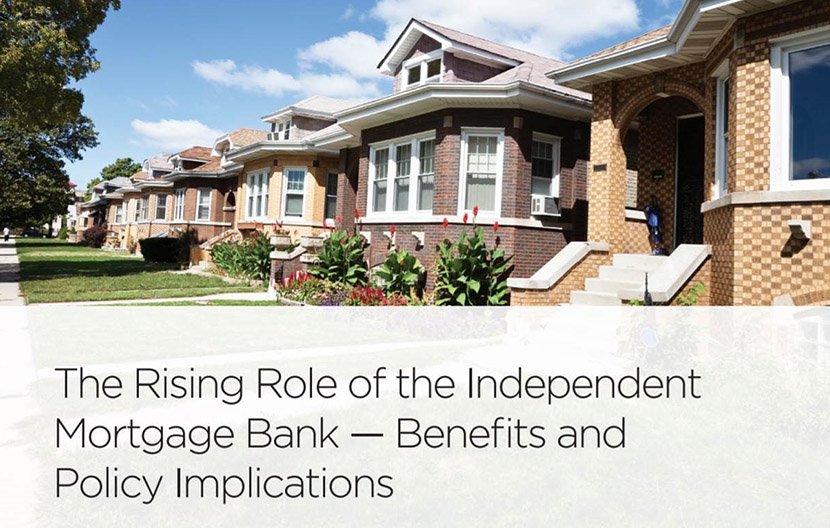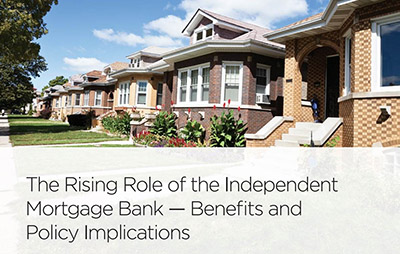
MBA Updates Documents on IMB Advocacy

The Mortgage Bankers Association issued updated versions of two documents that illustrate the association’s ongoing efforts to highlight the vital role of independent mortgage banks in the mortgage industry.
The documents–Independent Mortgage Banks, Financing the American Dream; and The Rising Role of the Independent Mortgage Bank — Benefits and Policy Implications—”serve as the backbone of our advocacy efforts on Capitol Hill, with federal regulatory agencies and with state and local officials who continue to have questions about the role that IMBs play in the housing finance market,” said MBA President and CEO Robert Broeksmit, CMB. “We will also utilize these two documents as we continue educating the media and other stakeholders about the IMB business model and its governing regulatory regime.”

As of 2018, more than 900 IMBs exist throughout the U.S., ranging from production volume of $100 million to nearly $100 billion annually, according to data from the Home Mortgage Disclosure Act.
The Fact Sheet provides a primer on the evolving role IMBs have played since the 1870s, serving the single-family mortgage market with sustainable mortgage products through all economic cycles.
“Independent mortgage banks strengthen our housing system by bringing local market knowledge, diversifying risk across a larger number of lenders and servicers and fostering greater competition and innovation,” MBA said.
The paper provides facts about IMBs; a description of the IMB business model; and the evolving market dynamics that have seen IMBs fill the void when banks pulled back from the mortgage market. It also notes how regulatory oversight of IMBs has strengthened significantly since the Great Recession.

The second paper (Benefits and Policy Implications) builds on these findings and examines recent developments driving continued growth of the IMB segment; and offers recommendations to enhance stability of the housing finance market. It also addresses unfounded or exaggerated concerns about the IMB model, such as systemic risk.
“As policymakers assess the state of the housing finance system, they should avoid steps designed to force market share away from IMBs,” MBA said. “Instead, MBA urges a focus on coordinated measures that will make the origination and servicing of mortgages an attractive and stable market for any lender—bank or nonbank—that wants to devote investment capital to supporting sustainable homeownership.”
